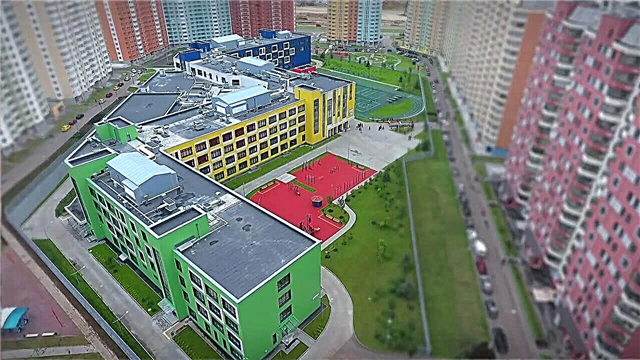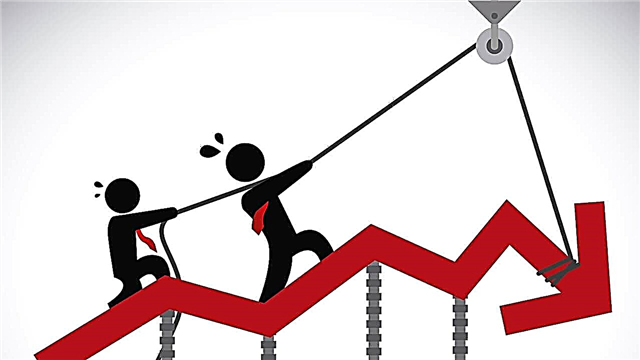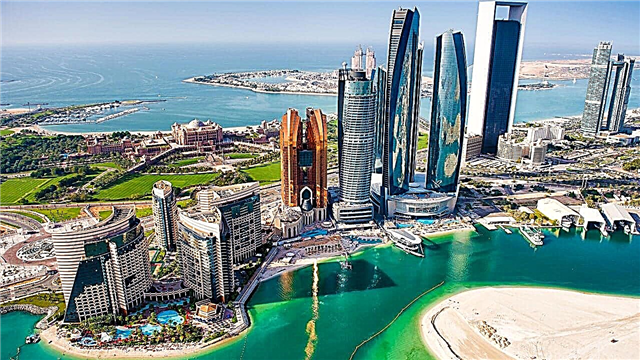Each year, the World Economic Forum (WEF) publishes a series of studies that allow readers to easily determine how their country is progressing or regressing.
One of these studies is devoted to which economies of which countries are competitive and which are doomed to remain in the margins of civilization. In fact, the loud word “competitiveness” means, according to WEF experts, only the ability of the state to effectively use its resources. This takes into account many parameters, ranging from the work of state institutions, the degree of development of infrastructure, the ability to receive medical care, education, good work, and ending with the level of technology and the state of domestic and international markets.
In total, 141 countries participated in the ranking of the most competitive economies in the world in 2019. And this is what the top ten looks like.

10. Denmark
 Rating: 81.2
Rating: 81.2
The representative of Scandinavia opens the ten most competitive economies in the world. She has a small gap from her predecessor: Finland, which is in 11th place, is only 1 point behind.
Despite the fact that the domestic market of Denmark is the smallest in Europe, the country is in the top due to the labor market, which is both flexible and efficient, and provides its citizens with protection from exploitation. It has high indicators in such indicators as the level of education and training, the dynamism of business and public institutions, as well as first place in macroeconomic stability.
9. Great Britain
 Rating: 81.2
Rating: 81.2
The long-running Brexit (that is, the country's exit from the European Union) did not affect the state of affairs in England. It still holds a leading position in terms of macroeconomic stability (first place), innovation (eighth place) and rapidly growing business (also eighth).
However, according to experts, Brexit will inevitably affect the economic situation in the country negatively, so the government will have to compensate for this. For example, to stretch fiber to every home, since the British have worse Internet access than many developing countries. In the implementation of information technology, England is even inferior to Russia (31st versus 22nd, respectively).
8. Sweden
 Rating: 81.2
Rating: 81.2
Another Scandinavian country leads in macroeconomic stability, and also takes 4th, 5th and 6th places in IT development, innovative potential and business development dynamics, respectively.
In terms of Internet and mobile communications, Sweden has come out on top of all the European countries participating in the ranking. More than 80.6 percent of the adult Swedish population regularly peers into the world wide web.
In addition to providing their citizens with communications, the Swedish government helps them get education and training (seventh in the world) and takes care of their health (11th).
7. Germany
 Rating: 81.8
Rating: 81.8
Germany owes seventh place in the ranking, first of all, to high macroeconomic stability and the level of development of its innovations.
- In terms of the number of patents granted, it ranks fifth in the world;
- for scientific publications - the third;
- according to research - the fourth.
And German companies are constantly competing among themselves, which of them is more advanced, which, undoubtedly, has a positive effect on the climate in the country as a whole. Moreover, innovations in Germany are instantly put into circulation, which allows the country to take second place in the world in the number of innovations introduced into the manufacturing sector.
Germany’s victorious march on the way to the first place is hindered by low indicators of financial system development (in comparison with other countries from the top ten), health and the introduction of information technology. For example, in terms of the number of fiber-optic cables extended to houses, the country of beer and sausages is not even in the top 50.
6. Japan
 Rating: 82.3
Rating: 82.3
The country of the Rising Sun is the leader in healthcare (the first in the world), and also holds high positions in terms of infrastructure development and market size. On the introduction of information technology, it is in sixth place.
Most of Japan’s adult population (93%) use the Internet on an ongoing basis, and the country ranks third in the world in the number of Internet cables stretched across the country. This figure looks especially impressive when you consider the size of Japan.
Restrained institutions of power, a low level of macroeconomic stability, and, from the point of view of an entrepreneurial culture, a fear of risks and a weak level of creativity hinder the development of the country. True, unlike other Asian countries participating in the ranking, innovation in Japan is encouraged.
5. Switzerland
 Rating: 82.3
Rating: 82.3
The country's strengths are the quality of education, macroeconomic stability and commitment to innovation. The headquarters of the largest international corporations are located in the country, which these innovations in every way encourage and use.
In addition to innovation, the compilers of the competitiveness rating of the countries of the world note the organizational structures that contribute to the development of science and technology, a first-class transport and communal infrastructure, high quality healthcare, and a well-functioning labor market.
Cons of the country - the desire of the Swiss to do their work behind closed doors of workrooms. And the size of the Swiss market is not too big, or the case is Russia.
4. The Netherlands
 Rating: 82.4
Rating: 82.4
Everything is good in this country - from infrastructure to business dynamism. A very strong side of the Netherlands is effective and transparent institutions of power, the actions of which can be found out by any citizen (including what the state spends money on).
In addition to being open and transparent, the Netherlands is known for freedom of speech, protection of property rights and a strong ethical component of national politics.
At the same time, doing business in the country is not just easy, but very easy, as well as getting a higher education. And in terms of macroeconomic stability, the country scored 100 points out of 100.
However, like any country, the Netherlands has weaknesses. This is the introduction of information technology (24th place) and healthcare (21th place).
3. Hong Kong
 Rating: 83.1
Rating: 83.1
The second, but not the last representative of Asia in the top 10 most competitive economies in the world. Although in the purely legal sense of the word “country” this territory cannot be called. Now it has a special status under the protectorate of the PRC, and Hong Kong will cease to exist independently by 2047.
In general, Hong Kong's economic profile is very similar to Singapore. Both of these city-states stand out in terms of macroeconomic stability, a well-established financial system, the efficiency of the market for goods and services, and excellent infrastructure. In addition, Hong Kong has a very responsible approach to public health, and by this criterion the city takes first place.
An extremely cautious approach to innovation can be called a weak link in the Hong Kong economy. Hong Kong’s competitiveness is also hindered by restrictions on press freedom.
2. USA
 Rating: 83.7
Rating: 83.7
In second place, behind the world's most competitive economy by 1.1 points, are the United States of America.
What the country has no equal in is the dynamics of business development (first place), the scale of the market (second place), the level of innovation (second place) and the established financial system (third place).
However, this business paradise has its own tigers - macroeconomic stability and healthcare. According to these indicators, the USA occupy 37 and 55 places respectively.
It is not surprising that Americans are not too happy - the suicide rate in the country is five times higher than the average for advanced economies.
1. Singapore
 Rating: 84.8
Rating: 84.8
The first place in the ranking of the competitiveness of countries and economies in the world in 2019 went to Singapore.
The reason for such a high position in the ranking is the country's maximum performance in three of ten key parameters: healthcare, infrastructure and labor market efficiency.
A significant competitive advantage of Singapore is its vast and completely open market for outside investors, the transparency of public institutions, as well as its superbly developed infrastructure. As for the life of ordinary citizens, here Singapore is in the top ten, in terms of life expectancy, it is even ahead of Japan.
To achieve the status of a world leader, the country will have to first solve a number of problems: deal with the bad environmental situation, give business more dynamism and pay more attention to macroeconomic stability.
And where is Russia here?
Among the countries of the former USSR, Russia is second only to the Baltic countries. As in the case with last year’s rating, our country is in 43rd place.
Cautious optimism inspires good indicators in such parameters as:
- market size - 6th line;
- IT implementation - 22nd position;
- innovative potential - 32nd line;
- macroeconomic stability - 43rd line;
- and infrastructure - 50th place.
Things are more or less good with business dynamics (53rd line) and higher education and training (54th place).
But in terms of public institutions (74th position), the efficiency of the market for goods and services (87th position), the development of the financial system (95th place) and, especially, health (97th line), our country is far behind the most competitive countries in 2019.
And the most uncompetitive economy in the world boasts Chad.












